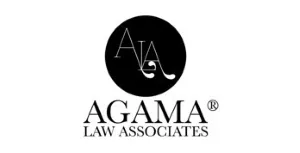- in United States
- within Corporate/Commercial Law topic(s)
- in United States
- with readers working within the Advertising & Public Relations, Banking & Credit and Retail & Leisure industries
- within Corporate/Commercial Law, Media, Telecoms, IT, Entertainment and International Law topic(s)
A mid-growth SaaS company, fresh off their first term sheet for a ₹40 crore infusion, found themselves in a surprising delay. Everything was aligned: due diligence done, traction numbers strong, founder chemistry perfect. Then the investor's compliance team flagged one line in the Memorandum of Association (MOA).
The company, focused on AI-led financial products, had a stray object clause that permitted "real estate development." It had been drafted years ago, copied from a template during incorporation. Nobody had looked at it since. But for the investor's compliance officer, it raised a red flag: was the company planning a pivot? Were there sectoral compliance risks?
The cheque was withheld. The clause had to be edited. Filings redone. Precious weeks lost. Trust, just slightly, eroded.
The MOA is more than a form. It's a signal.
Founders often treat the MOA like a dusty incorporation document. But to an investor, especially an institutional one with internal legal and regulatory checks, your MOA is a source of truth. It reflects how cleanly you've defined your business, how focused your execution is, and whether you understand the compliance triggers relevant to your sector.
Put simply: investors read your MOA like a story. And sometimes, it tells the wrong one.
Three MOA Red Flags That Rattle Investors
- Vague or misaligned primary objects
If your core activity is SaaS, but your primary object mentions "consulting" or "training," you could be inviting unwanted scrutiny. - Catch-all language
Clauses like "to engage in any lawful business" are often included as fallback. But they suggest a lack of clarity or discipline. - Sectoral silence
If you operate in a regulated space (fintech, healthtech, edtech), and your MOA is silent on the applicable business line, it's a red flag.
How Investors Read Between the Lines
Every word in your MOA is a potential signal. Some questions compliance teams ask:
- Is the business line clearly within a permitted FDI sector?
- Are there any clauses that could hint at NBFC-type operations?
- Will we need legal clearance before fund deployment?
Even if the answers are innocent, the burden of clarification causes delay.
Deals may survive this. But momentum can break. And when you're in a competitive raise, that pause can be fatal.
Real Examples We've Seen (Anonymised)
- A D2C food startup had "pharmaceuticals" in its MOA from an early co-founder. It flagged FSSAI and health regulations.
- A logistics-tech startup included "NBFC-style" language from its investor's template. It raised RBI licensing fears.
- An edtech founder had added "certification" services in the MOA, triggering UGC regulatory questions.
Fixes That Actually Work
1. Do a pre-term sheet MOA scrub: Don't wait for DD.
One of the most preventable errors is leaving your MOA untouched until due diligence begins. By then, you're already under time pressure, and every misalignment triggers emails, legal clarifications, or worse – investor cold feet. A light-touch scrub before a term sheet is signed costs little, takes a day or two, and often reveals outdated language or structural issues that can quietly be fixed well before they become blockers. Think of it as legal hygiene: a basic cleanup that signals preparedness and foresight. Doing business without an object specified in the MOA is a serious violation requiring one to file a compounding application with the relevant government authority which can sometimes take 6-9 months to close.
2. Align MOA with deck + actual ops: Consistency matters.
If your pitch deck says you're building a cross-border SaaS logistics solution, but your MOA restricts you to "IT-enabled services," it raises questions: not just about legal compliance, but about internal alignment.. Your business model, GTM language, and product-market positioning should all find at least a faint echo in your MOA's object clauses. It doesn't mean over-describing your innovation but it does mean ensuring that your legal structure doesn't contradict your narrative.
3. Remove legacy language: Especially from pivoted business lines.
Early-stage companies evolve fast. But founders often forget to update their MOA after pivoting. That's how you end up with a startup solving for AI-led contract intelligence with an MOA that still talks about e-commerce aggregators or bulk retail. Investors and their lawyers read these documents line-by-line, and leftover language from old ideas is a red flag. It indicates a serious violaiton prompting further diligence into other aspects of the business.
4. Add sector-specific clarity: Where needed, but precisely.
Don't fall into the trap of making your MOA a catch-all manifesto. But if you're operating in a sector with regulatory oversight – fintech, edtech, pharma, ESG-linked infra – it's often wise to clarify your scope in language that won't trigger compliance alarms or raise ambiguity during investor scrutiny. For example, stating "data analytics" might suffice for SaaS, but "KYC verification engines" or "regulated credit analytics" could attract RBI-related questions. Precision matters. Don't overexpose. Don't under-specify. Match the MOA to what your business actually does and is allowed to do.
The MOA is an Investor-Ready Document
We advise founders to view the MOA not as a legal artifact but a trust-building document. It should mirror the business story you're telling investors. If your MOA, pitch deck, and compliance filings don't talk to each other, someone will ask why. The best time to align them is before they do.
The content of this article is intended to provide a general guide to the subject matter. Specialist advice should be sought about your specific circumstances.


